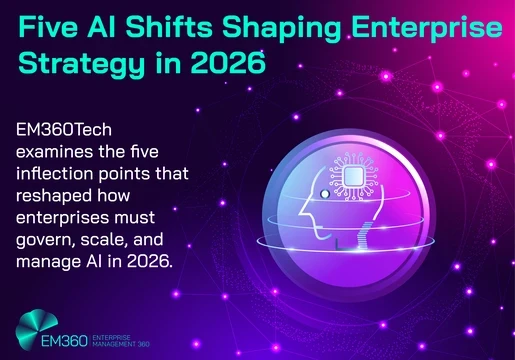If you now consider how Artificial Intelligence fits into app development, you’re on the right track. This article covers current trends, real use cases, and clear business value. We highlight top AI use cases in live products and show how teams move from idea to release with fewer delays and fewer mistakes.

What Does AI in App Development Mean?
AI places intelligent models inside the app so it can make decisions, adapt to behavior, and personalize content without constant manual updates. Instead of fixed rules, the app evolves with real use and delivers features that match context.
For users, this looks like:
- Tailored recommendations after a user views products
- Natural voice control that understands intent
- Layouts and content that adjust to habits and goals
For teams, this looks like:
- Less manual work during testing and iteration
- Faster turnaround between builds and updates
- Better performance from features that run directly on the device
Frameworks such as TensorFlow Lite and Apple Core ML support model deployment on iOS and Android, so results appear instantly, without a cloud round-trip.
From a developer’s point of view, there are countless ways to apply AI in app development, and we will offer many useful options in the next block.
Top AI Use Cases in App Development
To keep things clear, we will list key categories where AI in app development already delivers strong results and provide what we consider the best examples of apps that apply these methods successfully.
- Personalized recommendations. Many teams now use AI to tailor feeds, product lists, and queues for each person. A clear example is Spotify: the platform applies ML and LLM to build Discover Weekly, Release Radar, and custom radio. These features respond to skip rates, session time, and taste shifts, which lift retention and depth of use.
- Conversational support and guidance. Chat apps and social platforms now embed LLM use cases to simplify replies. On Instagram, AI suggests responses in chats, drafts captions, and proposes prompts inside stories. Tools react to context, cut reply time, and reduce load on support staff.
- Predictive search and shortcuts. AI now anticipates intent across time, location, and habit. Uber stands out here: the app predicts destinations, adjusts ride times, and proposes routes before a user types a full query. Fewer taps, faster results, less friction.
Real-time vision and document scan. Utility apps now use on-device AI to analyze photos, receipts, and media in real time. One of the best examples: free iPhone cleaners that automatically scan your photo library, spot patterns, and group together similar or near-duplicate images. Apps like Clever Cleaner: iPhone cleanup app can analyze your albums, pick out the best shots from each group of similar photos, and automatically clear the rest, all thanks to onboard AI.
Content and asset creation. Generative AI now supports text drafts, visual assets, and layout options. Netflix applies models to produce summaries, select thumbnails, and tune trailers based on audience data. This is not the only use at the company: in El Eternauta, Netflix used AI-generated elements in production, which shows how content teams now trust gen AI use cases as much as distribution teams.
- Voice control and hands-free use. Speech models now handle commands across accents and loud environments. This helps logistics crews, clinicians, and users with limited mobility. Voice triggers replace taps where screens slow people down.
- Security and fraud defense. AI guards platforms in real time. Uber detects price anomalies, fake activity, and edge behavior with pattern-based models. The system adapts fast without brittle rules, which protects riders, drivers, and the platform.
- Intent detection across input. Some apps now infer what a person wants, not just what the text says. Spotify adjusts mood and tempo from skip patterns and search loops. Mail and task tools use similar logic to set urgency, suggest next steps, or draft a polite reply.
- Developer acceleration. Dev teams at Instagram, Netflix, and others now apply LLM use cases to suggest code, spot bugs, write tests, and align APIs. Sprints shrink, quality holds, and release pace rises.
Strategic Value of AI in App Development
AI in app development creates real leverage. Teams cut costs, shorten build cycles, and lift retention. Apps no longer rely on static rules alone. Models adapt to context, history, and intent, so decisions reflect real use, not guesswork.
With Core ML and TensorFlow Lite, inference runs on the device; data stays local; delay stays low.
- Shorter build cycles - draft code, propose UI, find bugs in minutes.
- Lower cost - auto triage for support, text generation, and test case work without extra headcount.
- Higher retention - features match real needs; users stay longer.
- Fewer defects - anomaly and fraud alerts before release.
- Better decisions - clear view of funnel drop, cohort trend, and ROI.
More privacy and speed - on‑device models keep data local and cut delay.
A strong data flywheel also forms a moat. Proprietary data makes models sharper over time, raises the cost to switch, and limits fast copycats. In short, AI in app development now acts as business leverage: faster launches, tighter loops, and products that align with real use.
5 Latest Trends and Challenges in AI Integration Today
AI in app development now sits at the core of real products. The patterns below show where teams gain value and where risks appear first.
1. Data Strategy Moves From Volume to Value
Teams now prefer precise, well‑labeled events over giant, noisy datasets. Apps that capture clear context, time, sequence, device state, cohort, build models that rank content, predict intent, and detect fraud with far more accuracy. Early products often collect raw taps and page views without structure. That approach blocks useful models later.
Leaders go the other way: a tight event map, consistent names, and a clear link from product goals to captured signals. Spotify shows a strong approach here: skip rates, session time, and taste shifts feed playlists like Discover Weekly and Release Radar, which in turn lift retention.
The lesson is simple: before any model is built, fix event capture, define taxonomies, and align metrics with outcomes. Clean input sets the ceiling for what AI can do; guesswork data sets a very low ceiling.
2. On‑Device AI Grows Across Mainstream Apps
Small, efficient models now run on phones with low delay and stronger privacy. Cloud hops once added cost and lag; local inference removes both. Frameworks such as TensorFlow Lite and Apple Core ML make this path viable across iOS and Android. Expect more apps to adopt local models for voice, vision, and security as users demand faster response and stronger privacy by default.
3. Privacy‑First Product Design Becomes the Baseline
Rules such as GDPR and CCPA now shape system choices from day one. Teams ask, “What data do we truly need?” and “Can we keep it on the device?” Opt‑in flows, clear copy, and local storage now define good AI features. Apple’s ATT policy reset user expectations; many users now reject broad tracking, so products that avoid the cloud for sensitive tasks earn more trust. Utility apps lead the way here: photo cleaners, document readers, and file managers that classify, sort, and clear space with no upload.
The result: lower legal risk, fewer vendor dependencies, and a faster path from feature idea to live release. Privacy no longer acts as a last‑step review; it now sits inside the blueprint for every AI feature.
4. Frequent Model Refresh Replaces One‑Time Fit
Static models fall behind real users. Habits shift, queries evolve, and abuse tactics change. Leaders now run short refresh cycles, drift checks, and small A/B tests as a standard process. Netflix shows this mindset: new rankers run in shadow, then move into live cohorts only after they match or beat the current baseline. Tooling helps here; MLflow or SageMaker can trigger a retrain on a schedule and log results for review, yet discipline still matters.
Teams that watch accuracy, click‑through, and failure cases each week keep quality stable. Teams that set a model and forget it see slow decay, then an abrupt drop in trust. The market now rewards products that treat AI as a living system with clear owners and clear guardrails.
5. Quiet, Staged Release Replaces Hype
Three years ago, many teams rushed AI into production. The result: bold claims, fragile features, and user pushback. The current trend favors careful rollout: feature flags, small cohorts, fast rollback, and human review where stakes run high. Instagram’s AI prompts and reply aids arrived this way, low drama, real value, wider release only after proof. This approach keeps risk low and trust high. It also leaves room for course correction when edge cases appear. In short: ship small, measure hard, expand only after the data says “go.”
FAQ
What are the most effective AI use cases in app development right now?
Some of the most effective and widely deployed examples include personalized content (e.g., Spotify’s Discover Weekly), dynamic pricing (Uber), and AI-driven support chat (Instagram, Notion). These reflect top AI use cases because they improve retention, increase automation, and scale across users.
Spotify’s personalization models are a strong example of how AI personalizes experience without heavy UX overhead.
How are companies using LLMs inside mobile apps?
Teams use LLM use cases for contextual search, smart reply suggestions, support bots, and knowledge-based Q&A. Netflix now tests OpenAI-powered search in its mobile app, where users type mood-based requests instead of using filters.
Netflix’s LLM-powered mobile search shows how large models now replace rigid logic in real-world apps.
How does AI work on devices with limited resources?
AI models load in compressed form through Core ML, TensorFlow Lite, or quantized ONNX. These frameworks reduce file size while preserving accuracy. Many tools, such as file cleaners or smart keyboards, run AI directly on the device. This approach avoids cloud costs, lowers latency, and keeps user data local.
What makes AI in app development different from automation?
Automation follows fixed rules. AI adapts based on data and behavior. Automation moves steps from manual to automatic; AI shifts product logic from static to predictive. AI handles variation, learns from use, and improves decisions over time, especially in hard flows such as search, support, or content order.
Is AI required to build a competitive mobile app today?
Not in every case, but in many categories, yes. Music and video services, travel, health, and utility apps already rely on AI to cut friction, tailor content, and respond faster than manual flows allow. Without AI, products fall behind in relevance, speed, and user trust. Teams that use AI often outperform those that delay adoption.
Final Thoughts
AI no longer serves as an experiment or a bonus feature. In modern apps, it solves real problems that once required manual tuning, support teams, or rigid logic. It reacts to context, selects the right output, and improves decisions, without delay or extra steps.
What seemed complex yesterday, intent detection, real-time triage, multilingual processing, and contextual replies, now happens instantly. AI in app development delivers impact when applied with precision, not hype. The best teams don’t chase trends. They solve something specific, track the result, and move forward fast.
The competitive edge doesn’t come from using AI. It comes from using it with speed, purpose, and control before someone else does it better.







Comments ( 0 )